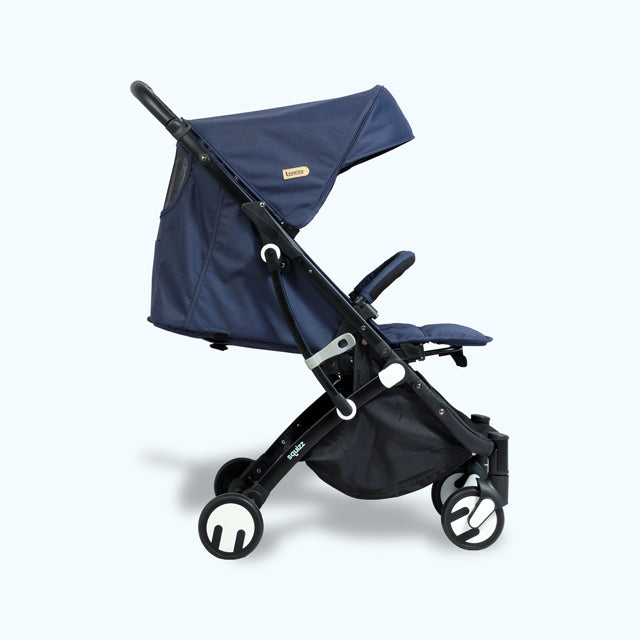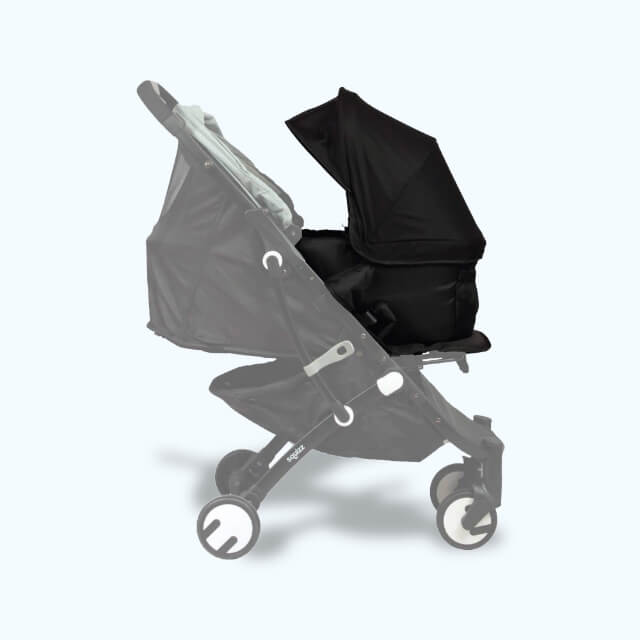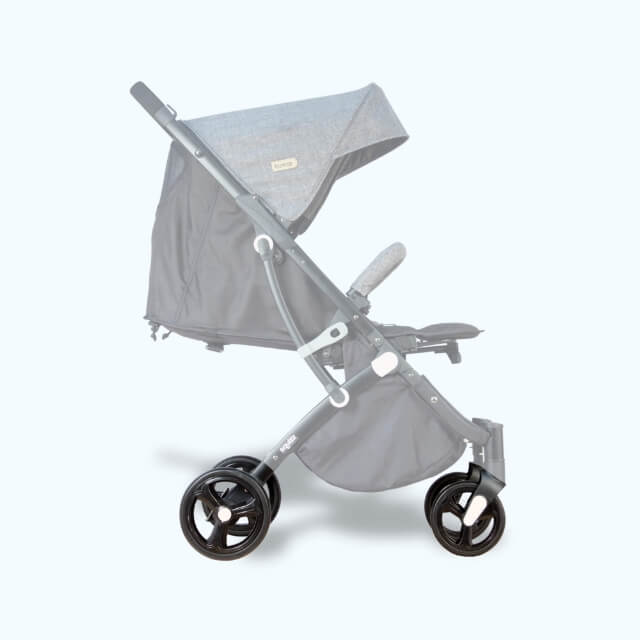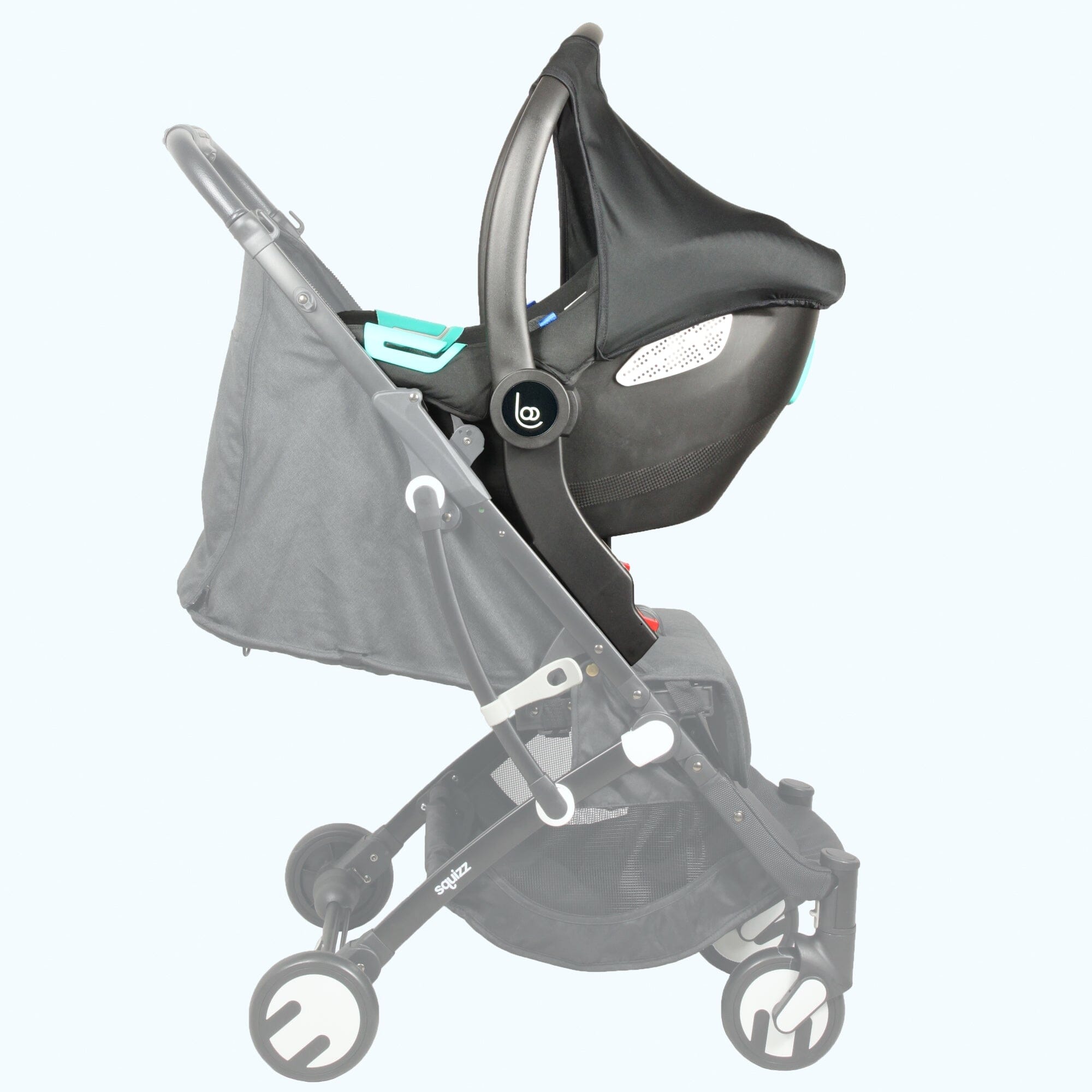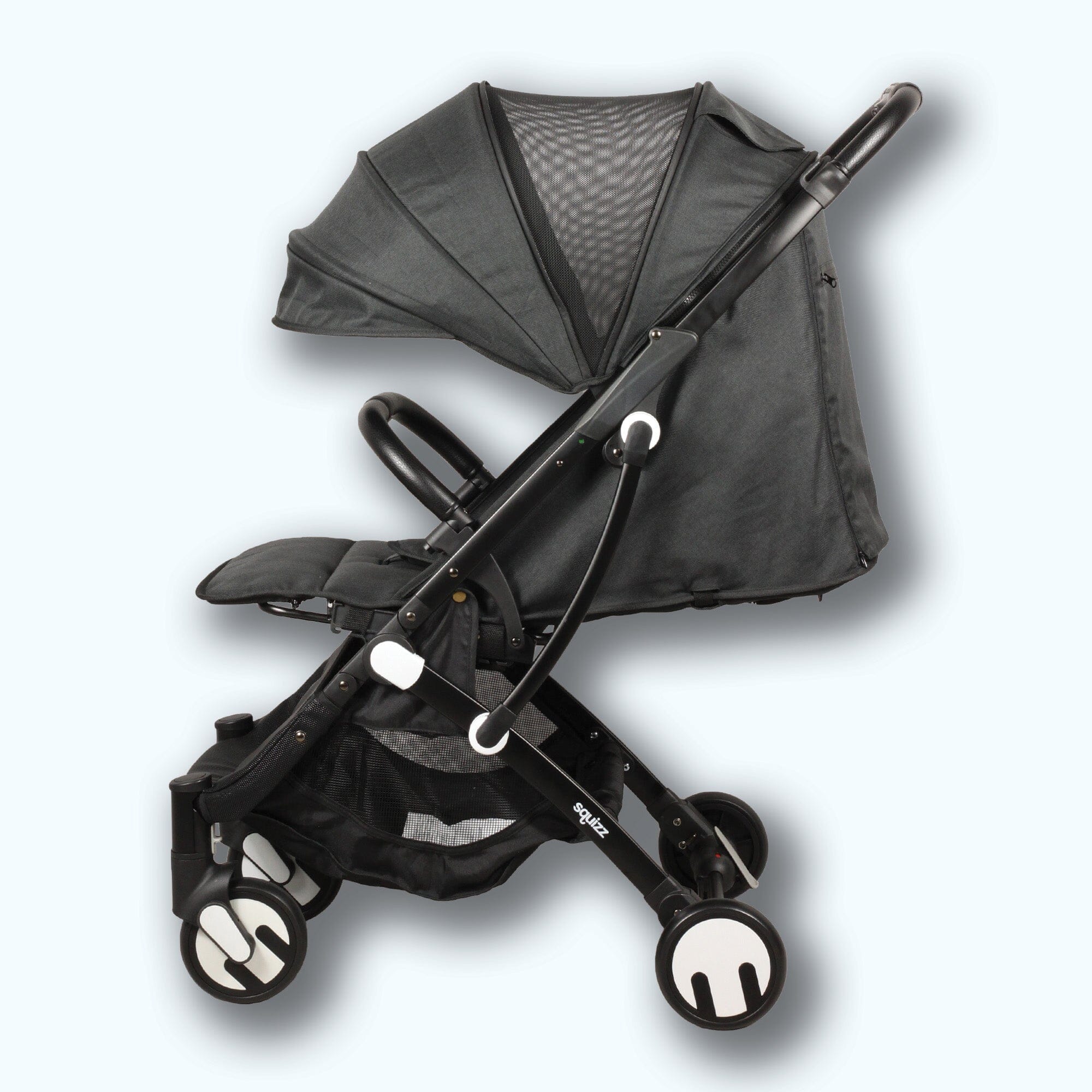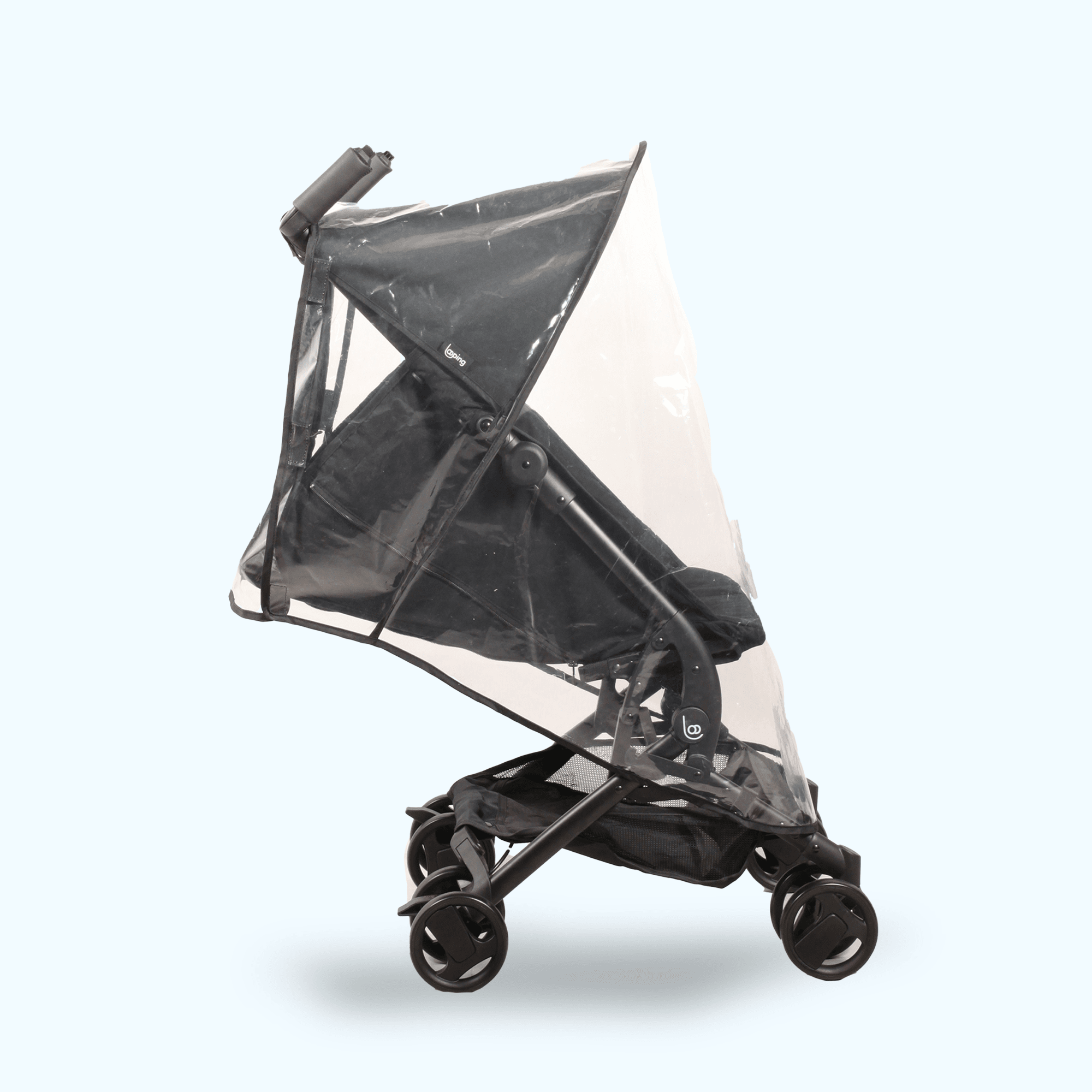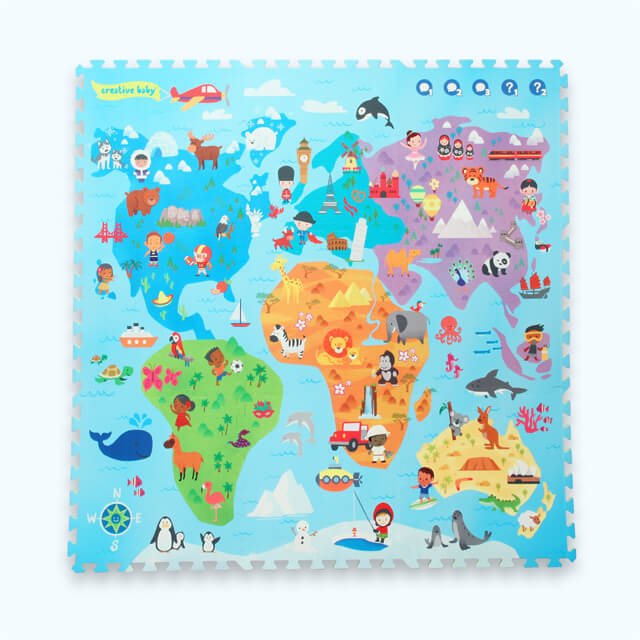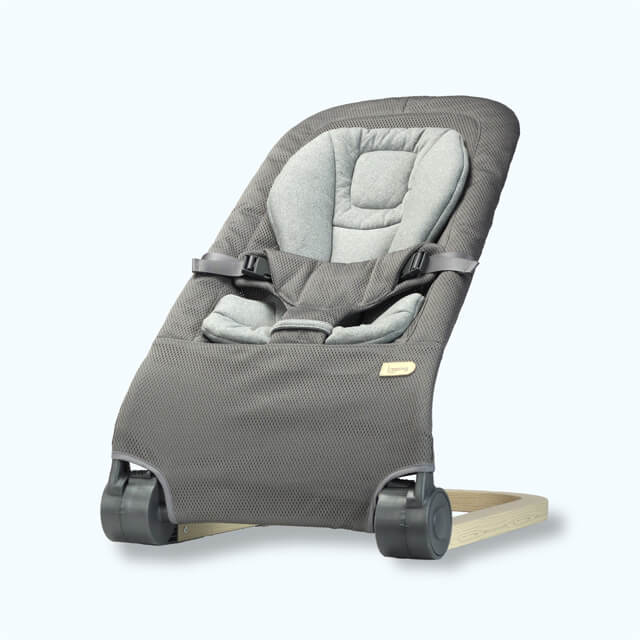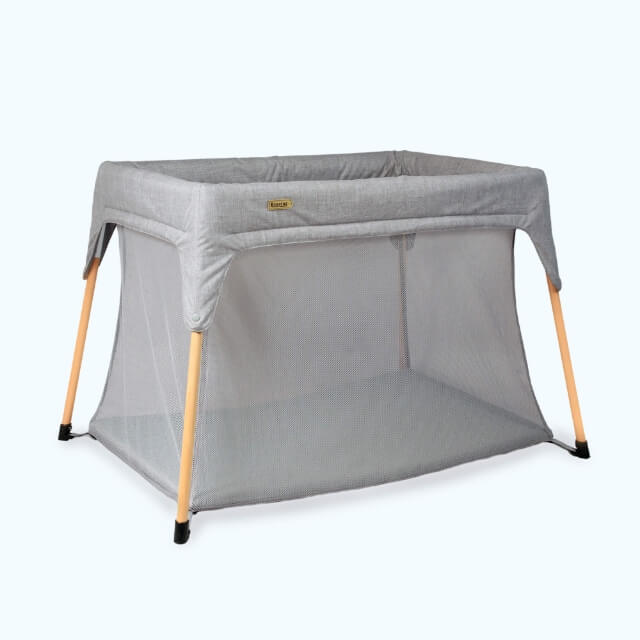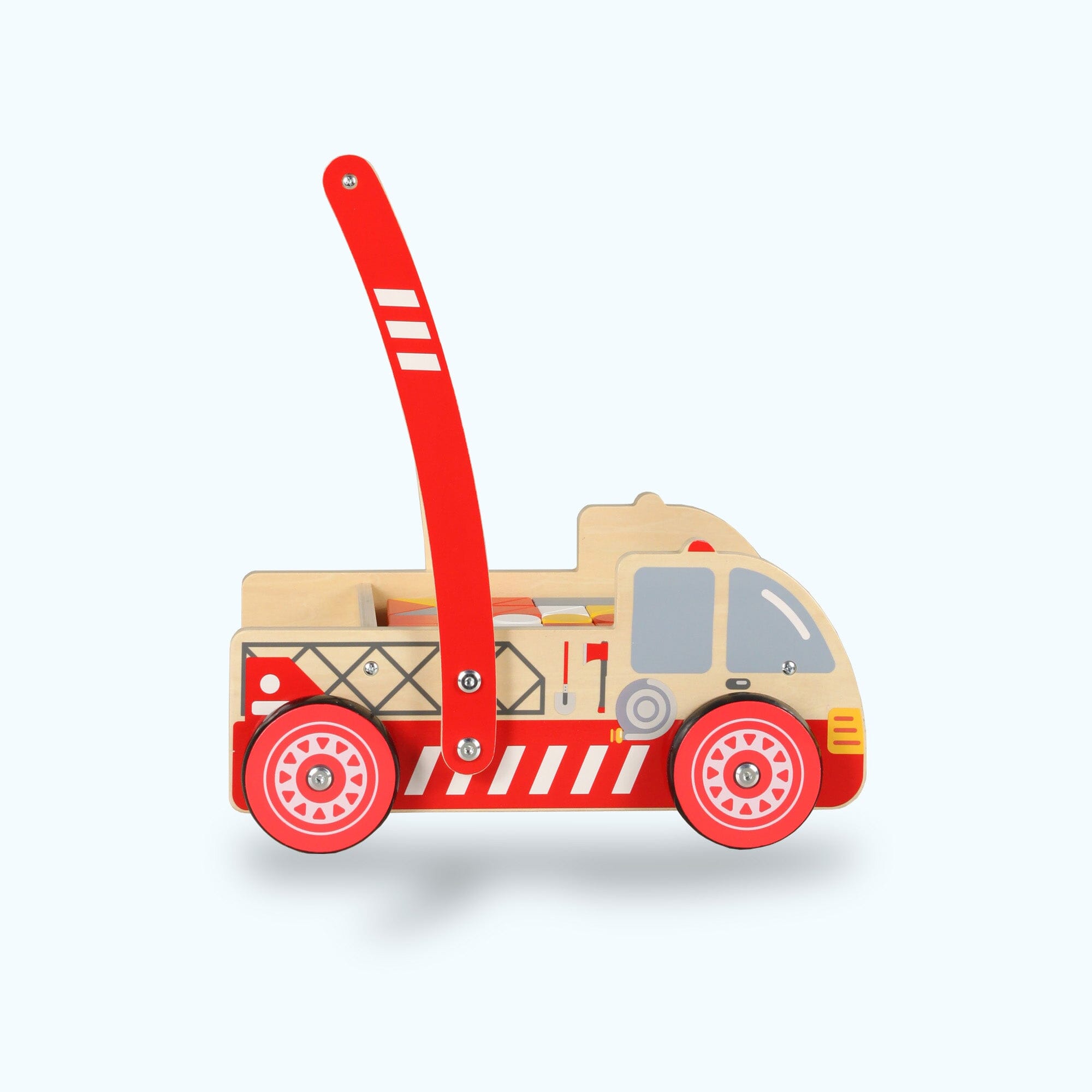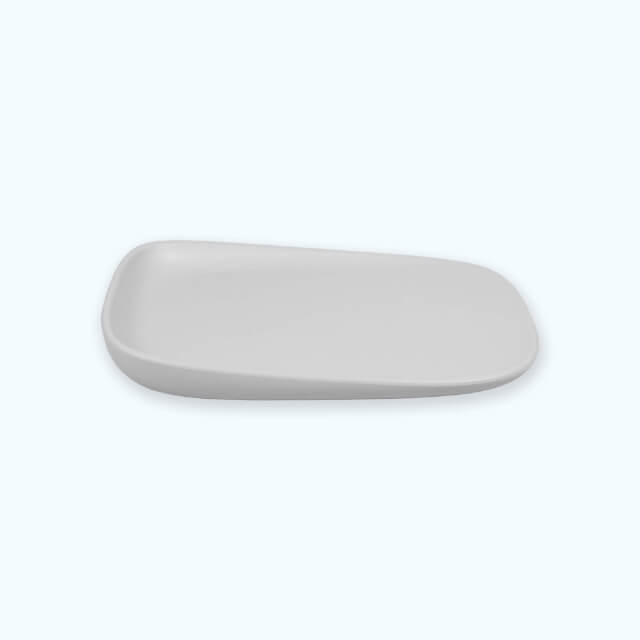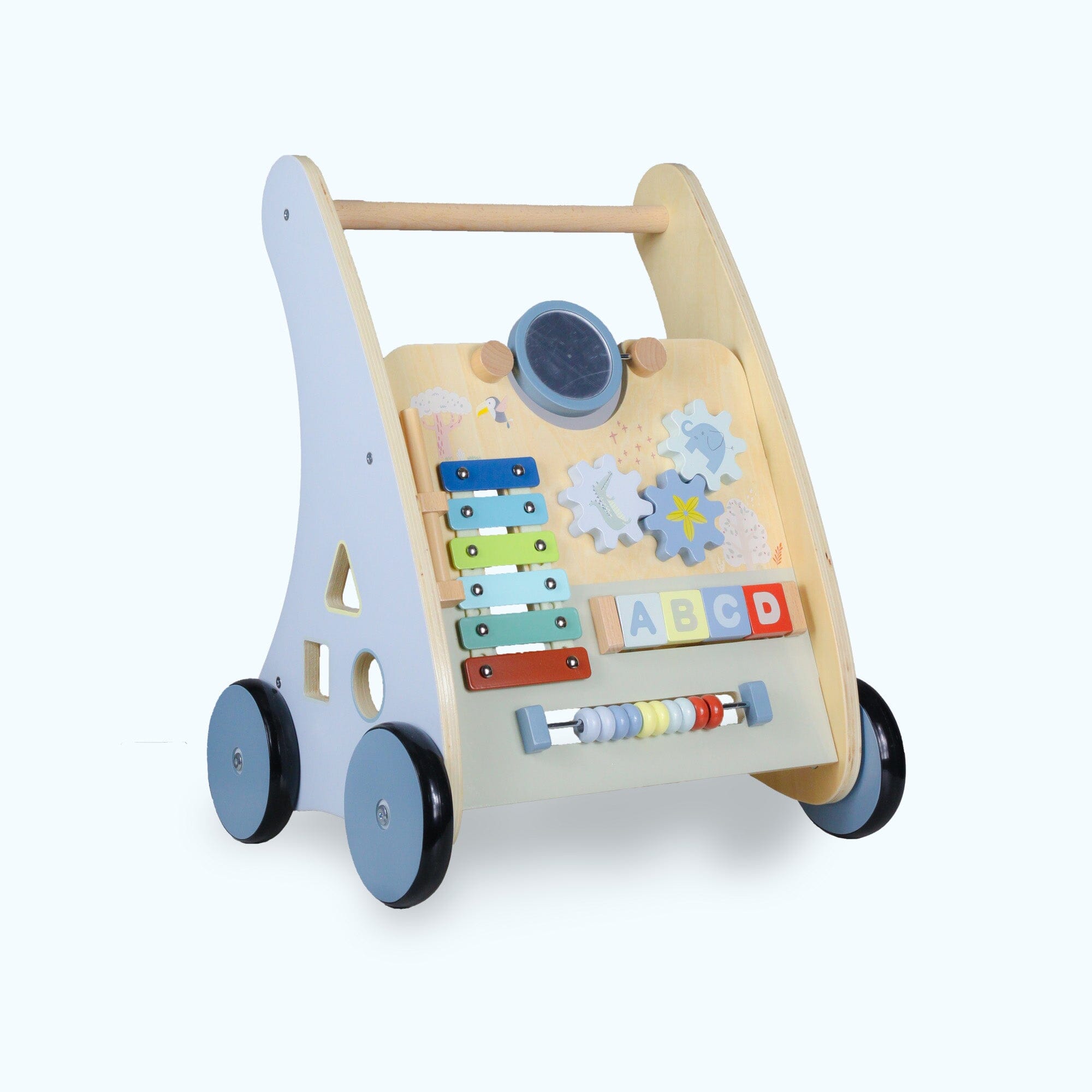All mothers can attest to this: choosing the right car seat is a very perilous task. It is necessary to combine comfort, functionality, support, ease of installation, compliance with European regulations. For children's car safety, we believe that parents must above all be properly informed in order to choose the right child car seat adapted to the child's needs and body shape. Because, in fact, in most car accidents, the serious consequences for babies are due to incorrect installation of the car seat, as revealed by the Road Safety association. This is why an essential observation must be taken into account when choosing your car seat:
Intuitive use of the product generates good behavior, safety starts there.
This article aims to make you knowledgeable on the subject! Whether it concerns regulations, standards, or new systems promoting your child's safety, we explain everything to you. Finally, we will be able to talk about the design of our “ideal” automatic seat through an interview with René, the founder of Looping.
How should the car seat be placed in the car?
The car seat is compulsory for children in cars up to the age of 10 or up to the height of 1.35 m since January 1, 1992. They must therefore be restrained from an early age with a suitable, secure and approved device: the car seat must correspond to the child's weight and height.
In most cases, a child should be put in the back seat of your car. Indeed, non-compliance is punishable by a fine of up to €750. It is also recommended to stick to this rule until the age of 12-13.
Child seats are mandatory rearward facing minimum up to 9kg. However, it is advisable to leave your child in this position as long as possible because it minimizes the consequences of frontal collisions.
There are, however, exceptions. When the rear seats are broken or already occupied by a child under 10 years old, you can install a seat for your child in the front of your car. This is also the case if the belts are unusable. However, this authorization is subject to conditions such as placing the young child in a rear-facing car seat and deactivating the airbag.
What are the regulations for car seats in 2020?
Currently two regulations coexist: ECE44 and R129. The R129 is gradually replacing the ECE44 but this does not call into question the seats already approved. The deadlines for the application of R129 have not yet been clearly determined by the administration but as soon as they are, all new ISOFIX seats will follow this regulation.
When driving with children, the applicable European regulation is ECE44. You will be able to find an orange ECE R44/04 approval label on all approved car seats. This orange label certifies that the seat meets basic safety requirements. Requirements are strengthened each year to reflect changing child safety needs. Today, this text is in its fourth amendment: it is called R44-04. We replace the booster seats with high-profile car seats with headrests. Indeed, they really hold babies and children. Seats approved according to R44-03 are still authorized for use but this is not the case for those conforming to versions 02 and 01, prior to 1995.
What are the different groups defined by R44?
Text R44-04 defines a classification of seats into five groups which depend on the weight of the child:
- group 0 car seats : from birth up to 10 kg;
- group 0+ car seats : from birth up to 13 kg;
- group 1 car seats : from 9 to 18 kg;
- group 2 car seats : 15 to 25 kg;
- group 3 car seats: from 22 to 36 kg.
What are the changes?
The European standard ECE R129, also called i-Size , which came into force in July 2013. This standard is based on the Isofix fixing system.
The R129 or i-Size standard aims to make it easier to choose the right car seat and optimize baby safety in the car. This standard therefore attempts to clarify and simplify the legislator's recommendations.
What does this regulation say?
It therefore requires:
-
Transport baby in a rear-facing position up to a minimum of 15 months. For what ?
Baby is fragile, we know that. This fragility is even more true at the level of the head and neck. Before 15 months, the child's head is relatively heavy and his neck is not yet sufficiently developed to withstand the impact suffered during a frontal impact. The rear-facing position for at least 15 months reduces the effects of impact and protects these two parts of the baby's body in the event of an accident.
Of course, you can continue to have your child travel in a rear-facing position beyond 15 months if your car seat allows it (i-Size).
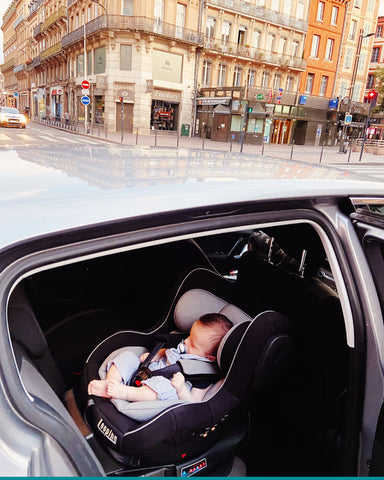
-
Raise requirements in the event of a side collision
Still in order to better protect baby's head and neck, the R129 standard requires manufacturers to have their i-Size car seat tested using a new dynamic crash test. During this extensive test, the vehicle door is pressed to reproduce the effect of a side impact.
-
Promote the ISOFIX system
To be i-Size , a car seat must be Isofix . In fact, this installation system considerably reduces the risks of incorrect installation of the car seat and the risks of improperly restraining your child.
-
Making it easier to choose the right car seat for your baby
Here is the breakdown by size of the R129 standard:
- Birth at 60 cm
- 60 to 75 cm
- 75 to 87 cm
- 87 to 105 cm
- 105 to 125 cm
- From 125 cm.

As with the R44/04 standard, some manufacturers offer longer use of the i-Size car seat. In fact, it is not uncommon to find i-Size car seats that can be used from birth to 105cm.
-
Make compatibility between vehicle and car seat easier
This is not happening right away, but the legislator's wishes are to guarantee the compatibility of i-Size car seats with recent cars. Thus, in the more or less near future, all cars sold will allow the correct installation of an i-Size car seat.
What are the approvals?
There are three different types of approval allowing you to determine whether a child car seat is compatible with your vehicle: universal, semi-universal and vehicle-specific. Universal approval does not depend on the car model. The seat is therefore approved and installable in all vehicles. The approval label must specify the type of approval.
-
Universal approval does not require consulting any vehicle list. The installation of the seat is approved in all cars meeting ECE R14 and R16 regulations. In the case of ISOFIX, the Top Tether, an additional strap attached to the rear of the car seat, MUST be attached to the 3rd anchor point of the car. In all cases, this feature must be used and the vehicle user manual must specify that the car is approved for universal ISOFIX car seats.
-
Semi-universal approval concerns cases where safety devices are required for seat attachment, in addition to the standard requirements, and these devices require additional testing. For example: for certain cars offering floor storage space, the use of a strut may present disadvantages. You must therefore check that your car is on this list.
- Vehicle-specific approval: The car seat has been tested in a specific crash test and is subject to approval only for this car. The car MUST be on the car seat manufacturer's approval list. This may include certain special features or constructions that can only be fitted to a given class of car.
What is the Isofix system?
Isofix is a system meeting international standards which allows the car seat to be installed correctly without using the vehicle's seat belts. This is a big step forward in road safety. It also benefits from much better results in the event of an accident.
It is safer because the seat is not simply fixed by the belts but is securely attached to the vehicle seat, thereby limiting forward rotational movement in the event of a frontal impact. This child seat attachment device allows installation which is free from risk of error. It is easier to install and has specific indicators that turn green when assembly has been correctly carried out. Whereas with the seat belt attachment device, mishandling is always possible. Like a pure and simple unhooking of the belt, unexpectedly or from the child's hands.
It is faster because the installation is done in three simple steps. There are two versions of the Isofix system, the version with the retaining strap and the version with the strut. Both systems are equipped with three anchor points: 2 Isofix connectors and an anti-rotation system (restraint strap or strut).
Appeared in 2006 on new vehicles, the Isofix system is compulsory on all cars produced since 2011.

Isofix system: how does it work?
The Isofix system is very simple, both in terms of its concept and its use. The vehicle equipped with Isofix has two metal rings which are placed between the backrest and the seat of the rear seat. These rings are perfectly concealed and do not bother the passenger who would sit on the bench without a child seat. The baby seat equipped with the Isofix system has two metal clips with a hook at their end. An Isofix seat also has an anti-rotation system via a third attachment point. This attachment is generally in the form of a strap which is used to hold the seat by linking it to the backrest. Or by a strut, which rests on the floor of the vehicle.
The Looping car seat
Looping launches its latest product: the swivel car seat from birth to 18kg. It is a completely scalable car seat thanks to its 360° rotation system. The attachment with its integrated isofix base allows safe and easy attachment (2 clicks are enough), so that the child is always attached in the same way. Even when there are no children on the seat, no risk of flying objects is possible.
The rotation of the seat makes it easier for the child to install and the adjustment of the harness allows intuitive use. The ease of use of the product generates good behavior on the part of parents, because it will put you in the best possible conditions for a good installation of the seat, and thus, a good installation of the child. For us, safety starts there.
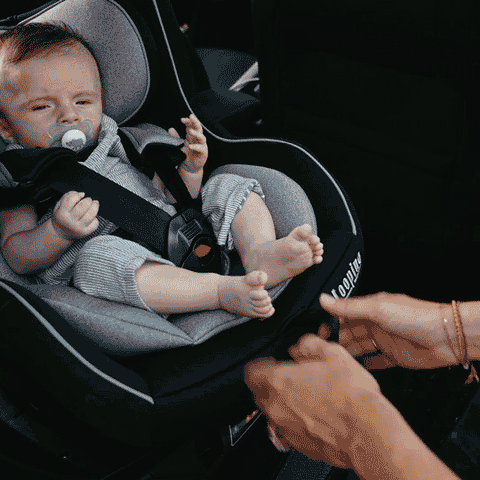
Our car seat is equipped with impact protection on the sides, indicators that indicate whether the car seat is correctly installed, as well as fully adjustable and one-handed harnesses including the height of the headrest. 10 positions are available for the height of the headrest. 5 inclinations are provided (two to be rearward facing, and 5 facing the road). You can also adjust the inclination of the seat according to the child's size and thus adapt it to all ages.
The product we offer you is durable and qualitative. It significantly reduces the risks for your baby in the event of an accident. Finally, for added practicality, the cover is removable and machine washable.
In order to guide you further on the characteristics, circumstances and creative choices of our new favorite, the creator of Looping answered a few questions.
What standards is the G0+/1 rotating car seat subject to?
As this is a product to be placed in a vehicle, the rotating car seat is subject to European regulation ECE44 (including dynamic tests: "crash test") which will be verified during a simulated impact on a test bench , the effectiveness of the restraint system and the condition of the seat after impact.
In addition, the materials and textile parts are subject to chemical requirements and flammability tests based on “the toy standard” which is a reference in the children's world.
How do you ensure that the product complies with the standard?
The seat must first of all be approved by the factory that manufactures it in a European country and by an accredited laboratory. Its approval number affixed to the product authorizes its placing on the market. Regular tests are carried out every 5,000 manufacturing cycles and the factory is audited every year in order to maintain the approval number of the car seat.
For our part, we complete this normative process with random tests to ensure the absence of deviations in manufacturing. These additional tests may concern dynamic tests, the chemical part, or flammability.
Why is the car seat designed for babies weighing less than 18 kg? Why not go beyond?
Within the framework of European regulation ECE44, car seats are defined and tested according to weight ranges. A seat can combine several groups but we preferred to limit ourselves to Group 0,+1 in order to maintain optimum performance and offer the possibility of leaving the child rear facing for as long as possible. We then recommend completing it with a group 123 seat which will ensure continuity of comfort and performance, with the child moving from one seat to another naturally depending on their body shape. Parents will thus be able to cover the entire duration of use with 2 car seats (therefore a reasonable budget).
Does the price of a car seat indicate quality?
Yes and no !
- Yes, because you must use quality materials, high plastic thicknesses, comfortable and cushioning textile coverings and choose technical solutions ensuring correct installation of the child in the car seat, and of the car seat in the car. For example, for this last point, the Isofix solution (more expensive than belt fixing) is more reliable, easier to install correctly and therefore safer.
- No, because car safety must be seen as a whole, firstly with the choice of a good car in terms of impact behavior (not necessarily the most expensive), good fixing of the seat in the car (the seat is too often poorly installed and ruins all safety efforts) and finally a good installation of the baby in the seat with an appropriate harness adjustment and a rear-facing position for as long as possible, depending on his morphology and temperament. Safety also depends a lot on driver behavior that no equipment in the world (except autopilot) can control. All elements of this chain must be considered and a single lack can seriously harm overall security. Whatever its price, an expensive car seat (because it is very reinforced) but where the child is difficult to install, will be less efficient than a less expensive seat but easy to use, allowing parents not to make mistakes and to stay calm and relaxed.
What are the advantages of the rotating car seat compared to a simple car seat or even compared to the GR0+ car seat?
Depending on the vehicle, the space available between the door (which opens more or less) and the passenger seat can be very limited and make installing the baby in the car seat very complicated. This can lead to poor installation, annoyance for the baby and parents, which can be detrimental to driving. The rotating car seat allows you to have the child in front of you when installing them in the car seat and therefore, even in a small space, to adjust the height of the harness and its tension perfectly and without stress.
It also allows you to calmly check all the points before turning the seat in the desired direction (backward facing for as long as possible) and sitting calmly behind the wheel. The possibility of keeping your baby rearward facing for as long as possible significantly reduces the risk of trauma to the spine and head compared to an impact facing the road. The rotating seat allows you to choose this safer position at any time and very easily. it also allows you to use your seat for children of different ages.
How did you acquire your “expertise” in the use of products and the standards to be respected?
Our experience of more than thirty years in the field of children's equipment, our own use, the always renewed curiosity, the permanent listening to users, and finally the active participation in the French and European standardization commissions allow us to have an overview of the issues related to the use of a product intended for children and used at the same time by adults.
If the adult often gives his opinion and recommendations, the baby does not have the means to express his feelings and it is our duty to take this silent point of view into consideration. We therefore have knowledge of the standards, regulations and decrees to be scrupulously respected, but our job is also to go further and use our diverse experiences to make products designed for parents and designed for babies.
I hope I helped you choose your car seat. If you have any questions, do not hesitate to contact us on our social networks or at love@looping-baby.com. Thanks for reading this far. :)
